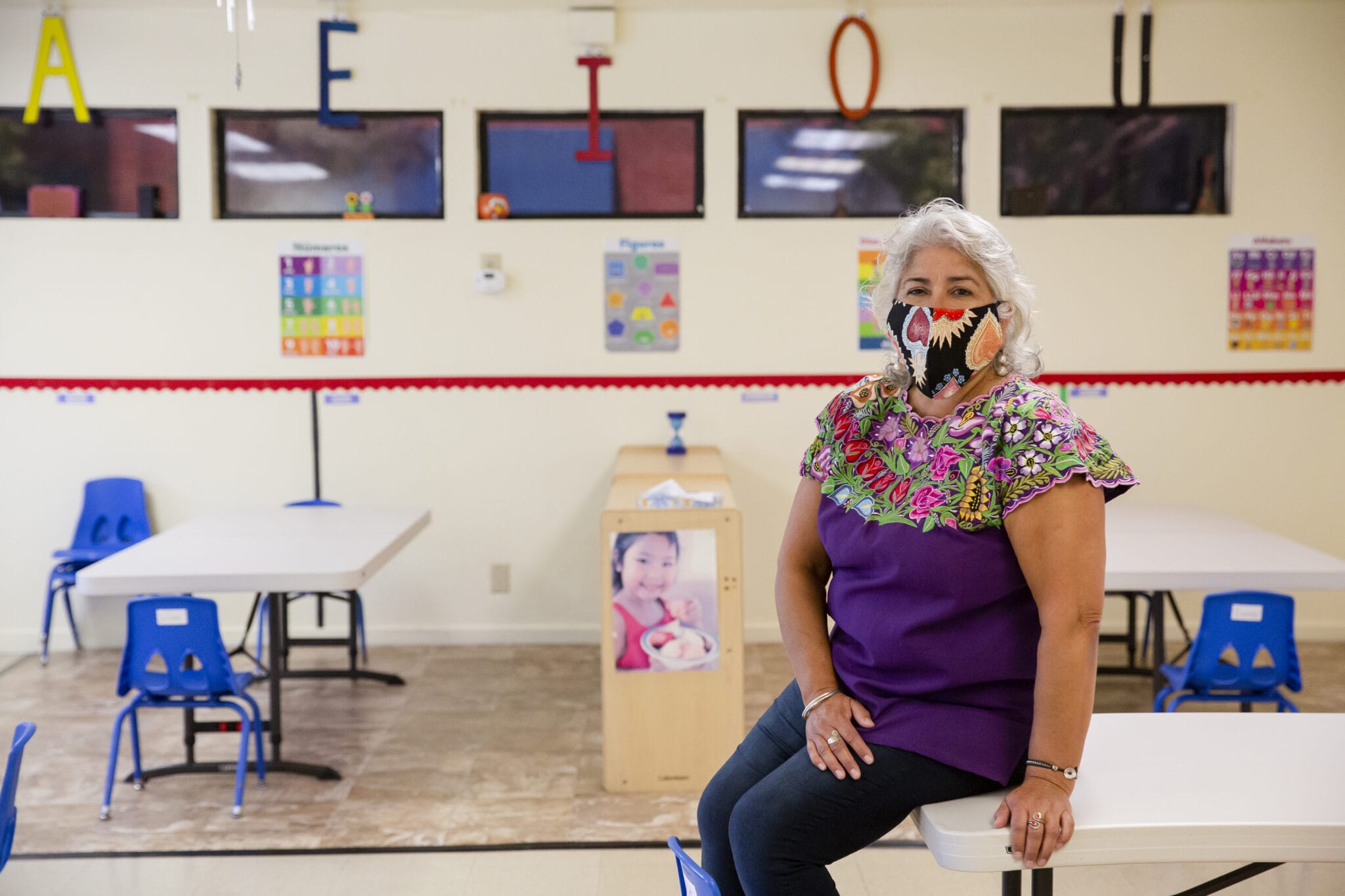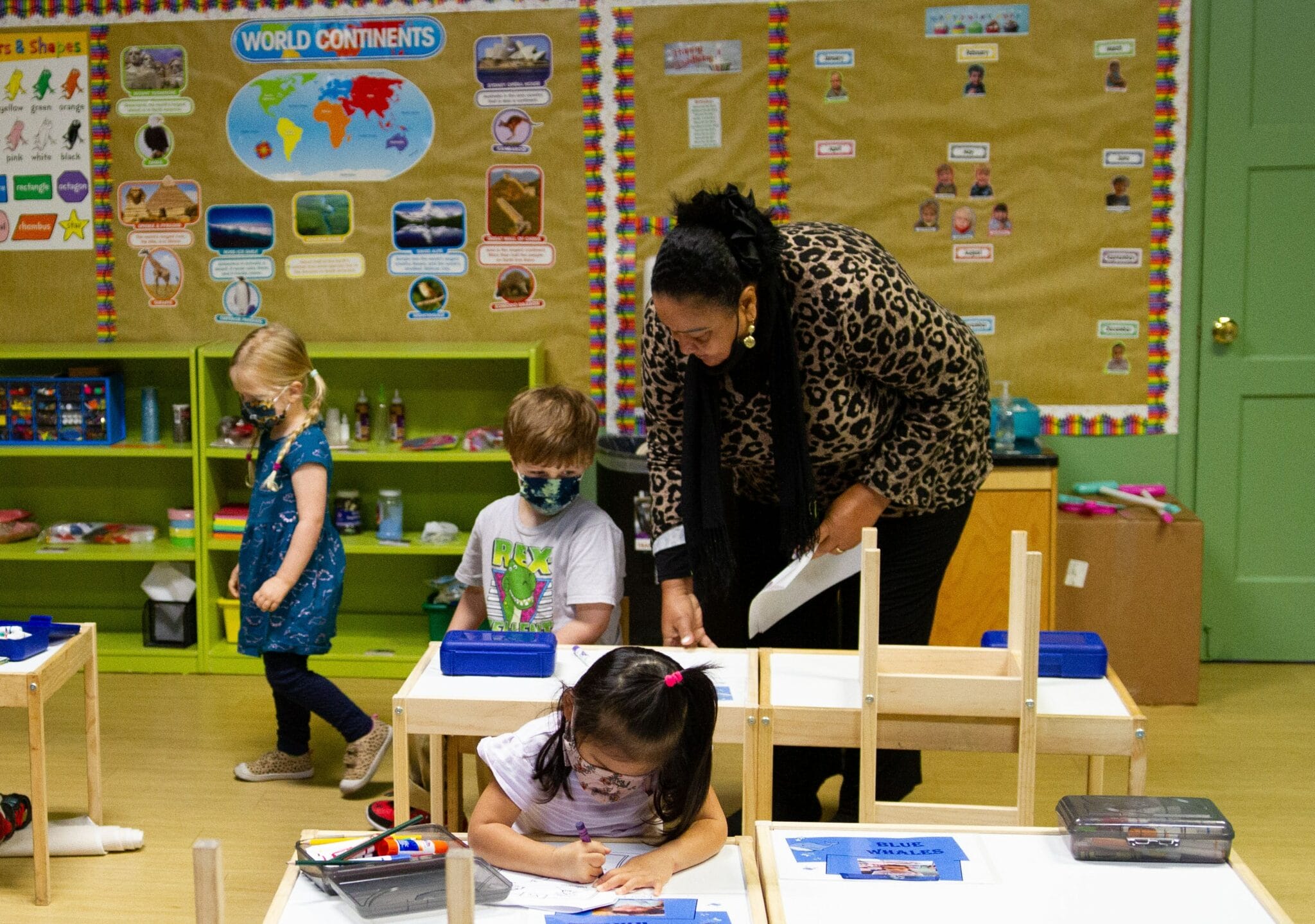There is increasing consensus about the critical importance of children’s development in the earliest years and its impact on success in later life. High-quality early care and education depends, especially, on teachers who are skilled at nurturing children’s development and learning.
Based on a comprehensive review of the science on early childhood development and learning, in 2015 the National Academy of Medicine and the National Research Council recommended transitioning to a minimum requirement of a bachelor’s degree, with specialized knowledge and competencies, for all lead teachers of children from birth through age eight, and requirements for all those working with children, regardless of role or setting, to include foundational knowledge and competencies.
But at the moment, not one state has qualification requirements in line with the National Academy of Medicine and National Research Council recommendations, as demonstrated by our recent report, The Early Childhood Workforce Index. The 50 states and the District of Columbia each set their own qualification standards for early educators, and those requirements vary widely not only across states, but within states according to setting and source of funding. In any state, the qualifications a child can expect her teacher to meet depend not on his or her developmental and educational needs, but on the type of programs that are available and affordable given his or her family’s circumstances. This state of affairs is not only inequitable for children, but inefficient – confusing to families and cumbersome for the workforce to navigate.
In the Index, all 50 states and DC were assessed on how they regulate entry requirements for early educators in child care centers and home-based settings, as represented by minimum educational requirements included in state licensing laws, and whether state educational requirements for lead teachers in state-funded pre-K programs are set at a bachelor’s degree or higher.
States are making greater progress toward raising educational requirements for pre-K teachers serving children age three to four (though these teachers make up only about a quarter of those educating and caring for children age birth to five), but still lag far behind in minimum requirements for early educators working outside the public pre-K system. Of the 44 states (including DC) with public pre-K programs, just over ½ (23) require a minimum of a bachelor’s degree for teachers, regardless of setting. An additional 14 states require a bachelor’s for some pre-K teachers in certain types of programs or settings, most often pre-K teachers located in public schools only. Seven states do not require a bachelor’s degree for any pre-K teachers. These uneven qualifications are in sharp contrast to the standard requirement of a BA and licensure for K-12 teachers across states.
For early educators working outside the pre-K system, only 11 states set a minimum requirement of at least a Child Development Associate Credential (CDA) or completion of a substantive vocational program. Most states require only a high school diploma. Moreover, too many states require nothing at all: ten states have no requirements for teaching staff in centers, and 23 states have no requirements for home-based settings with two or more providers. Yet these early years represent the most critical period for children’s development and learning.
Some progress, but much more to do
Early educators’ educational attainment has increased over time in certain settings, in part due to increased awareness of the need for minimum education requirements, such as in the federal Head Start program, as well as state efforts to fund scholarship programs for early educators. The most recent national data demonstrates that over …“ of teaching staff in centers hold at least a bachelor’s degree. Yet, again reflecting differences in minimum requirements, a BA or higher is much more common among early educators working with children age three to five (45%) than among those working with children under age three (19%).
Low and inconsistent standards for early educators send the inaccurate message that early learning holds less value and requires less skill compared with teaching older children, contributing to insufficient investment in early care and education compared to K-12, and consequently, poor working conditions for many early educators (see part two of our series on the Index: Improved Working Conditions for Early Educators Are Necessary to Facilitate Children’s Development).
Access to well-prepared educators matters for all children, regardless of their age and the setting in which they learn. State education standards should reflect that principle in order to reduce the inequity and inconsistency, which is currently codified into the nation’s early care and education system.
What can business leaders do?
- Support policies to ensure that all those currently working in the field have access to training and education, along with higher standards for early educator qualifications (see page 31 of the Index).
- Advocate for increased, sustainable investment in the early childhood sector, including resources directed specifically at workforce development.
- Make the case that investment in early childhood teachers is similar to investing in company employees to ensure a strong and future skilled workforce.
- Highlight the research which shows that the most important variable impacting a child’s learning is the teacher in the classroom.
- Promote the importance of high quality early learning and educators to ensure readiness and a strong start for all children.
- Share resources and information with employees–many of whom are parents–about these early education issues.
Addressing shortfalls in how we currently prepare, support, and compensate the early childhood workforce is essential for ensuring that we are able to recruit and retain teachers skilled in providing a high quality learning environment for our youngest children, setting them on the path to success as students and employees for years to come.


